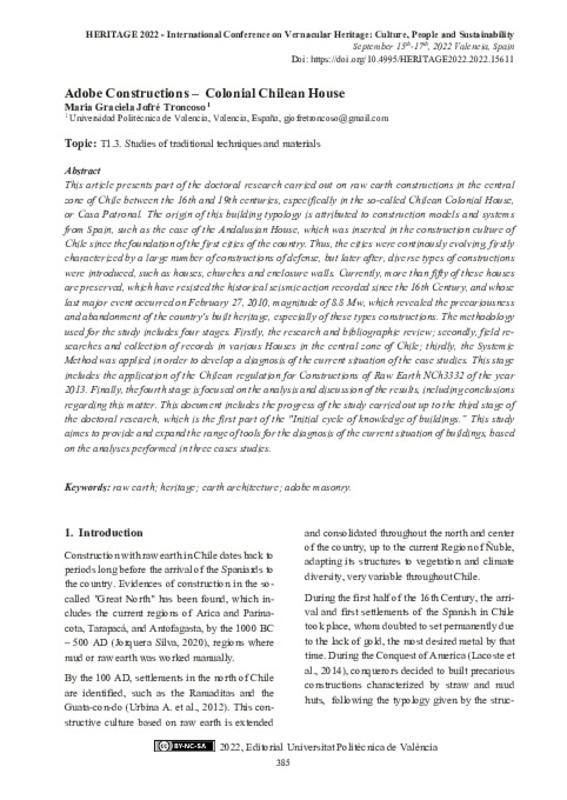JavaScript is disabled for your browser. Some features of this site may not work without it.
Buscar en RiuNet
Listar
Mi cuenta
Estadísticas
Ayuda RiuNet
Admin. UPV
Adobe Constructions – Colonial Chilean House
Mostrar el registro completo del ítem
Jofré Troncoso, M. (2022). Adobe Constructions – Colonial Chilean House. En Proceedings HERITAGE 2022 - International Conference on Vernacular Heritage: Culture, People and Sustainability. Editorial Universitat Politècnica de València. 385-392. https://doi.org/10.4995/HERITAGE2022.2022.15611
Por favor, use este identificador para citar o enlazar este ítem: http://hdl.handle.net/10251/188799
Ficheros en el ítem
Metadatos del ítem
| Título: | Adobe Constructions – Colonial Chilean House | |
| Autor: | ||
| Fecha difusión: |
|
|
| Resumen: |
[EN] This article presents part of the doctoral research carried out on raw earth constructions in the central zone of Chile between the 16th and 19th centuries, especifically in the so-called Chilean Colonial House, or ...[+]
|
|
| Palabras clave: |
|
|
| Derechos de uso: | Reconocimiento - No comercial - Compartir igual (by-nc-sa) | |
| ISBN: |
|
|
| Fuente: |
|
|
| DOI: |
|
|
| Editorial: |
|
|
| Versión del editor: | http://ocs.editorial.upv.es/index.php/HERITAGE/HERITAGE2022/paper/view/15611 | |
| Título del congreso: |
|
|
| Lugar del congreso: |
|
|
| Fecha congreso: |
|
|
| Tipo: |
|









